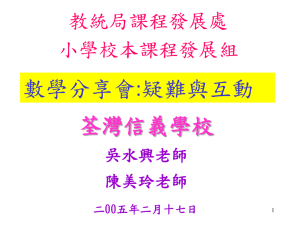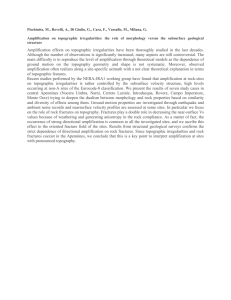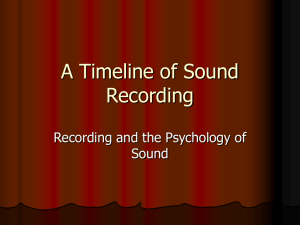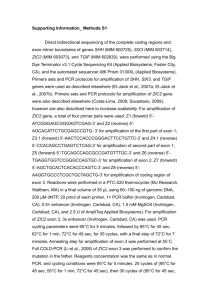Appendix B: The local linear theory for Sato & Okada (1966) and
advertisement
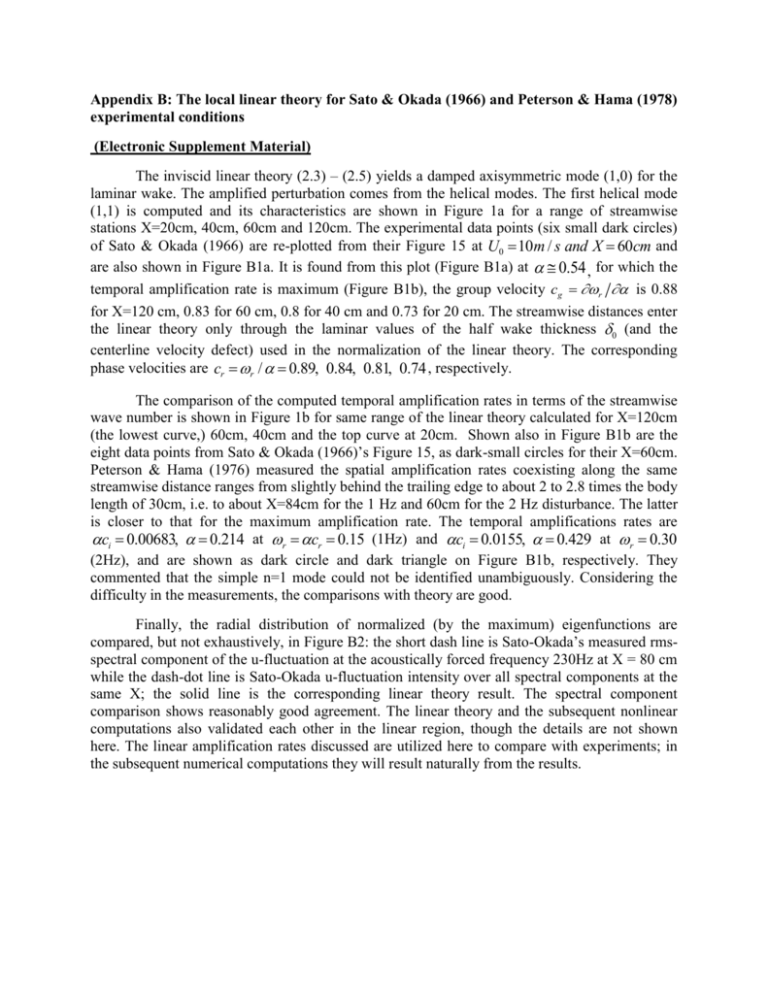
Appendix B: The local linear theory for Sato & Okada (1966) and Peterson & Hama (1978) experimental conditions (Electronic Supplement Material) The inviscid linear theory (2.3) – (2.5) yields a damped axisymmetric mode (1,0) for the laminar wake. The amplified perturbation comes from the helical modes. The first helical mode (1,1) is computed and its characteristics are shown in Figure 1a for a range of streamwise stations X=20cm, 40cm, 60cm and 120cm. The experimental data points (six small dark circles) of Sato & Okada (1966) are re-plotted from their Figure 15 at U0 =10m / s and X = 60cm and are also shown in Figure B1a. It is found from this plot (Figure B1a) at a @ 0.54 , for which the temporal amplification rate is maximum (Figure B1b), the group velocity cg r is 0.88 for X=120 cm, 0.83 for 60 cm, 0.8 for 40 cm and 0.73 for 20 cm. The streamwise distances enter the linear theory only through the laminar values of the half wake thickness d0 (and the centerline velocity defect) used in the normalization of the linear theory. The corresponding phase velocities are cr = wr / a = 0.89, 0.84, 0.81, 0.74 , respectively. The comparison of the computed temporal amplification rates in terms of the streamwise wave number is shown in Figure 1b for same range of the linear theory calculated for X=120cm (the lowest curve,) 60cm, 40cm and the top curve at 20cm. Shown also in Figure B1b are the eight data points from Sato & Okada (1966)’s Figure 15, as dark-small circles for their X=60cm. Peterson & Hama (1976) measured the spatial amplification rates coexisting along the same streamwise distance ranges from slightly behind the trailing edge to about 2 to 2.8 times the body length of 30cm, i.e. to about X=84cm for the 1 Hz and 60cm for the 2 Hz disturbance. The latter is closer to that for the maximum amplification rate. The temporal amplifications rates are aci = 0.00683, a = 0.214 at wr = acr = 0.15 (1Hz) and aci = 0.0155, a = 0.429 at wr = 0.30 (2Hz), and are shown as dark circle and dark triangle on Figure B1b, respectively. They commented that the simple n=1 mode could not be identified unambiguously. Considering the difficulty in the measurements, the comparisons with theory are good. Finally, the radial distribution of normalized (by the maximum) eigenfunctions are compared, but not exhaustively, in Figure B2: the short dash line is Sato-Okada’s measured rmsspectral component of the u-fluctuation at the acoustically forced frequency 230Hz at X = 80 cm while the dash-dot line is Sato-Okada u-fluctuation intensity over all spectral components at the same X; the solid line is the corresponding linear theory result. The spectral component comparison shows reasonably good agreement. The linear theory and the subsequent nonlinear computations also validated each other in the linear region, though the details are not shown here. The linear amplification rates discussed are utilized here to compare with experiments; in the subsequent numerical computations they will result naturally from the results.
